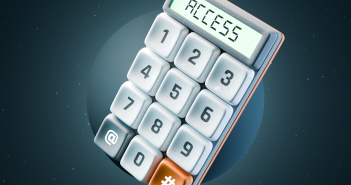Ever wondered where a powerful GPU truly shines in Blender? Michael Bridges dives deep into the specifics, helping you optimize your hardware for the best performance.
Does Blender need a powerful GPU? Yes—but only in the right areas. In this video, I break down exactly where a GPU makes a difference and where it doesn’t, so you can optimize your hardware for the best performance.
Ever wondered what your GPU actually does in Blender? You might have upgraded your graphics card, expecting massive performance improvements, only to find things still running slower than you'd hoped. Today, I’m diving into exactly how Blender uses your GPU—and where it doesn’t—so you can make informed hardware choices and optimize your workflow.
We start by breaking down RAM vs. VRAM and how each plays a role in performance. While VRAM is crucial for handling textures, rendering, and viewport performance, running out of it can slow things down significantly. I also demonstrate how different Blender tasks impact memory usage, showing real-time examples of how VRAM and system RAM are allocated.
Next, we explore viewport performance, highlighting when the GPU helps and when it doesn’t. While rendering modes like Material Preview and Cycles benefit from GPU acceleration, solid and wireframe views remain CPU-driven. I also test sculpting to reveal that while the viewport may get a small boost from a good GPU, the actual vertex manipulation is entirely CPU-based.
Rendering, however, is where a strong GPU shines. I show a direct comparison between CPU and GPU rendering times, proving how crucial GPU acceleration is for faster renders—especially for animations. But simply having a powerful GPU isn’t enough; I also guide you on enabling the correct settings to ensure Blender is actually using it.
We then move on to animations, compositing, and geometry nodes, revealing which tasks are GPU-heavy and which remain CPU-bound. Modifiers and geometry nodes, for example, mostly rely on the CPU, but viewport performance benefits from a good GPU when working with textured scenes.
Textures and environment lighting can also have a major impact on performance. I demonstrate how high-resolution textures quickly eat up VRAM, slowing down renders if Blender has to offload them to system RAM. Similarly, large HDRI environments can take a toll on memory, affecting both real-time lighting and rendering efficiency.
For simulations and VFX—such as smoke, fire, water, and cloth—Blender is fully CPU-dependent, meaning a better GPU won’t speed up these calculations. I show live examples of how increasing simulation resolution slows down playback and why pre-baking simulations is essential for smooth performance.
Finally, I touch on Blender’s Video Sequence Editor, which does not benefit from GPU acceleration. Since all video decoding and effects are CPU-driven, editing high-resolution footage in Blender can be frustrating without proxies. I explain how this process works and why a dedicated video editing software like DaVinci Resolve might be a better choice.
So, does Blender need a powerful GPU? The answer is yes—but only in the right places. Rendering, materials, and lighting see massive improvements, but simulations, modeling, and video editing remain mostly CPU-bound. If you've ever struggled with performance in Blender, what was your biggest bottleneck? Let me know in the comments, and don’t forget to like and subscribe for more tech insights!




